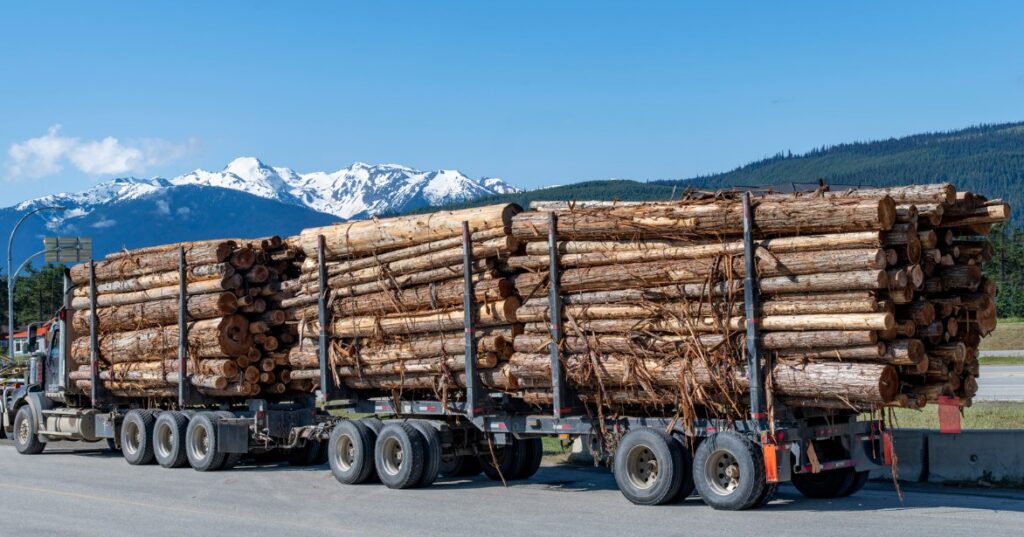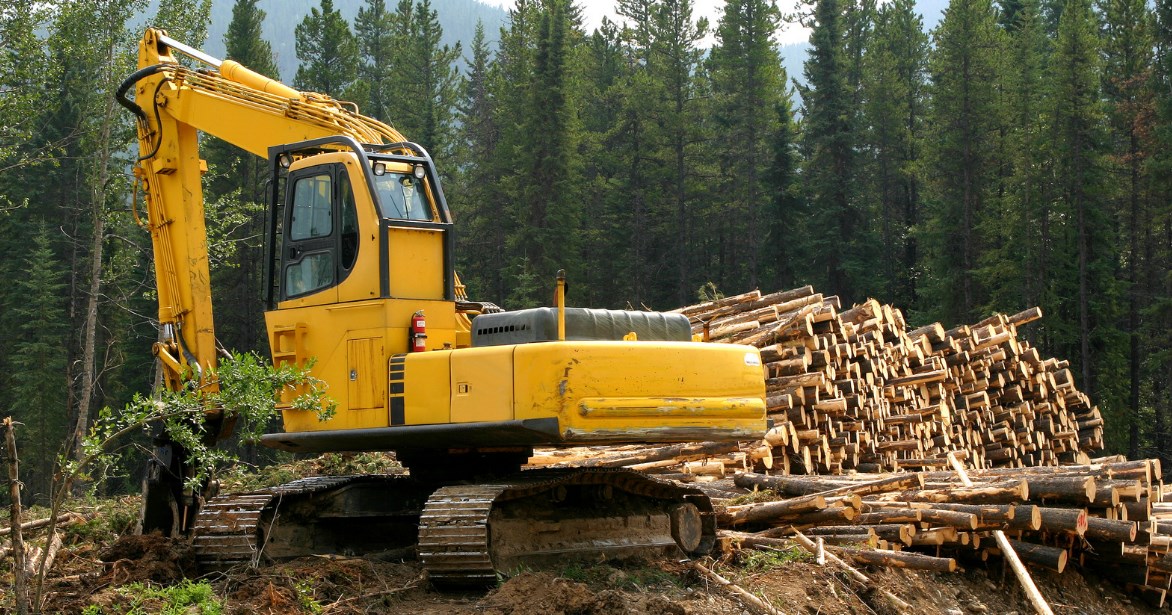Canada’s vast forests have long been the backbone of a thriving logging industry that supports rural economies, provides essential building materials, and contributes significantly to the nation’s cultural heritage. However, as climate change accelerates—with rising temperatures, shifting precipitation patterns, and more extreme weather events—the very foundation of forest ecosystems is undergoing dramatic changes. In this in-depth exploration, we’ll examine how climate change is reshaping the future of logging, the evolving practices and technologies that are emerging in response, and what it means for sustainable forestry in Canada.
The Impact of Climate Change on Forest Ecosystems
Changing Weather Patterns and Their Effects
Canada’s climate is in flux. Winters are becoming shorter and milder in some regions, while summers are growing hotter and drier. Such fluctuations have far-reaching consequences for forest ecosystems. Warmer temperatures can lead to earlier springs and delayed autumns, which in turn disrupt the natural cycles of tree growth and dormancy. In many areas, the intensity and frequency of extreme weather events—such as wildfires, ice storms, and heavy rainfall—are on the rise.
For logging operations, these changes present both challenges and opportunities. Extreme weather events can damage trees, alter forest structure, and increase the risk of pest outbreaks. For instance, prolonged drought conditions stress trees, making them more susceptible to insect infestations and diseases. Conversely, milder winters may allow logging operations to extend into months previously deemed too harsh, albeit with additional risks that require careful management.
Effects on Tree Physiology and Forest Health
Trees in Canada have evolved over millennia to withstand harsh winters and brief growing seasons. However, the rapid pace of climate change is pushing these adaptive mechanisms to their limits. Reduced winter daylight—often diminishing by up to 70% in northern regions—forces trees to operate on minimal energy reserves, slowing their growth and photosynthetic activity. While deciduous trees shed their leaves to conserve energy, conifers must rely on their needle structure and protective resins to survive the cold. With rising average temperatures, the delicate balance between energy conservation and growth is increasingly disrupted.
Furthermore, the shift in temperature and moisture levels is causing changes in species distribution. Trees that once thrived in certain regions may find the new climate unsuitable, while others—better adapted to warmer conditions—begin to encroach. This not only affects the overall health of the forest but also influences the quality and quantity of timber available for logging.
Evolving Logging Practices in Response to Climate Change
Adapting to a Changing Environment
In response to these environmental shifts, the logging industry is rethinking its traditional practices. Sustainable forestry is no longer just an ideal—it has become a necessity. Modern logging operations are increasingly focused on selective harvesting, which involves the careful removal of trees rather than clear-cutting large swaths of forest. This approach helps maintain biodiversity, preserve soil health, and ensure that forests can regenerate naturally after harvest.
Technological innovations play a crucial role in this transition. For example, advanced machinery such as feller bunchers, harvesters, and low bedding equipment allows for more precise cutting and reduces collateral damage to surrounding vegetation. By integrating real-time data collection, remote sensing, and Geographic Information Systems (GIS), logging companies can now monitor forest health, plan harvests more accurately, and minimize the environmental impact of their operations.
Embracing New Technologies
Technology is transforming the logging industry in once unimaginable ways. In the face of climate change, companies are investing in machines that not only increase productivity but also contribute to sustainable practices. For instance:
- Feller Bunchers and Harvesters: Modern feller bunchers are engineered to cut and gather trees with incredible precision, reducing waste and preserving the integrity of adjacent trees. Their advanced hydraulic systems, integrated with GPS and telematics, ensure that each cut is as efficient as possible while minimizing soil disturbance.
- Low Bedding and Heavy Equipment Transport: Specialized low bedding trailers enable the safe and efficient transport of heavy machinery even in challenging weather conditions. This is particularly important during winter months when frozen ground can complicate movement and increase the risk of equipment damage.
- Remote Sensing and Drones: Drones equipped with high-resolution cameras and LiDAR are now used to survey forest stands, detect early signs of pest infestations, and assess tree health. This data-driven approach allows for more informed decision-making and timely interventions, reducing the overall impact of logging on the environment.
- Electric and Hybrid Machinery: As the industry seeks to reduce its carbon footprint, the development of electric and hybrid logging equipment is gathering pace. These machines produce lower emissions and can operate more quietly, thereby reducing both environmental and noise pollution.
Changing Species Composition and Forest Management Strategies
Shifting Tree Species and Timber Quality
One of the most significant impacts of climate change on forestry is the alteration of species composition. Warmer temperatures and altered precipitation patterns are causing shifts in the geographic ranges of many tree species. For example, species traditionally found in southern regions may begin to appear further north, while cold-adapted species may decline in areas that are warming more rapidly. This change in species distribution has direct implications for timber quality, as different trees yield wood with varying properties and market values.
Forest managers now face the challenge of predicting these shifts and adapting their management plans accordingly. This includes identifying which species are likely to thrive in the new conditions, planning for reforestation with climate-resilient species, and ensuring that harvesting practices do not compromise the forest’s ability to regenerate. By integrating climate models with forest inventory data, managers can develop strategies that balance economic objectives with long-term ecological sustainability.
Adjusting Forest Management Practices
In light of climate change, traditional forest management practices must evolve. Sustainable harvesting now involves a greater focus on ecosystem health, with an emphasis on preserving genetic diversity and promoting natural regeneration. Techniques such as thinning, controlled burns, and selective harvesting are increasingly used to reduce competition among trees, lower the risk of pest outbreaks, and mitigate wildfire hazards.
Furthermore, forest certification programs, such as those administered by the Forest Stewardship Council (FSC) and the Sustainable Forestry Initiative (SFI), are playing an important role in ensuring that logging operations meet stringent environmental standards. These certifications not only promote responsible forestry practices but also enhance market access by meeting the growing consumer demand for sustainably sourced wood products.
The Role of Technology and Innovation in a Changing Climate
Leveraging Data for Sustainable Logging
Various logging professionals are harnessing the power of big data and advanced analytics to navigate the uncertainties brought by climate change. Remote sensing technologies—such as satellite imagery, drones, and LiDAR—provide detailed insights into forest conditions, including tree health, biomass density, and potential pest outbreaks. By combining this data with predictive models, forestry professionals can plan harvests more precisely, optimize machine routes, and anticipate environmental risks.
For instance, integrating GIS mapping with on-the-ground observations allows companies to design efficient harvesting plans that minimize soil compaction and protect sensitive areas. This technology also supports post-harvest monitoring, ensuring that reforestation efforts are successful and that the ecosystem remains balanced.
Innovations in Machinery for a Resilient Future
Modern logging equipment is evolving to meet the challenges posed by climate change. Some of the most promising innovations include:
- Telematics and Real-Time Monitoring: Advanced feller bunchers and harvesters are now equipped with telematics systems that provide real-time data on machine performance, fuel consumption, and maintenance needs. This not only improves operational efficiency but also helps reduce downtime and lower costs.
- Automation and Robotics: The future of logging may well lie in semi-autonomous or even fully autonomous machinery. By reducing the need for human intervention in dangerous environments, these systems promise to enhance safety and productivity. Remote operation capabilities also allow for precise control over harvesting activities, ensuring that only the targeted trees are cut while preserving the overall forest structure.
- Low-Emission Machinery: As environmental regulations tighten, there is a growing push for electric and hybrid logging equipment. These machines produce fewer emissions, operate more quietly, and reduce the overall environmental footprint of logging operations. Although still in the early stages of adoption, low-emission technology represents a significant step toward more sustainable forestry practices.
Economic Implications and Future Outlook for the Logging Industry

Market Trends and Economic Impact
Climate change is not only altering forest ecosystems but also influencing the economic landscape of the logging industry. As timber supplies and species distributions shift, so too do market dynamics. Increased demand for sustainable and certified wood products is driving changes in both pricing and production methods. Landowners and logging companies must now navigate a more complex regulatory environment while balancing the pressures of economic viability and environmental stewardship.
Investments in technology and sustainable practices can offer long-term cost savings and open up new market opportunities. For instance, efficient machinery and data-driven management practices help reduce waste and optimize resource use, ultimately improving profitability. Moreover, the growing consumer preference for eco-friendly products means that sustainably managed forests can command premium prices in the market.
Challenges and Opportunities
While climate change presents significant challenges to the logging industry, it also opens up opportunities for innovation and growth. Companies that proactively adopt sustainable practices and invest in advanced technologies are better positioned to navigate the uncertainties of a changing climate. These forward-thinking approaches not only enhance operational resilience but also build a reputation for environmental responsibility, which is increasingly valued by consumers, investors, and regulators alike.
Key challenges include the need for ongoing operator training, the high upfront costs associated with new technologies, and the complexity of adapting management practices to new climatic conditions. However, with strategic planning and a commitment to sustainable forestry, these challenges can be transformed into opportunities for long-term success.
Conclusion
Climate change is reshaping the landscape of the logging industry, demanding that companies adapt their practices to protect both their resources and the environment. From the physiological challenges faced by trees in a warming world to the advanced technologies that enable sustainable harvesting, the future of logging will be defined by innovation and resilience.
By embracing data-driven strategies, investing in modern machinery, and committing to sustainable forestry practices, the industry can meet these challenges head-on. At SAN Forestry, we are proud to lead the way in responsible logging, ensuring that Canada’s rich forest resources continue to thrive for generations to come.
At SAN Forestry, we offer comprehensive logging services, advanced low-bedding solutions, and expert management of private woodlands in Western Canada and beyond. Discover how our innovative approaches can benefit your operations. Visit our contact page today to speak with one of our experts and learn more about our services.




